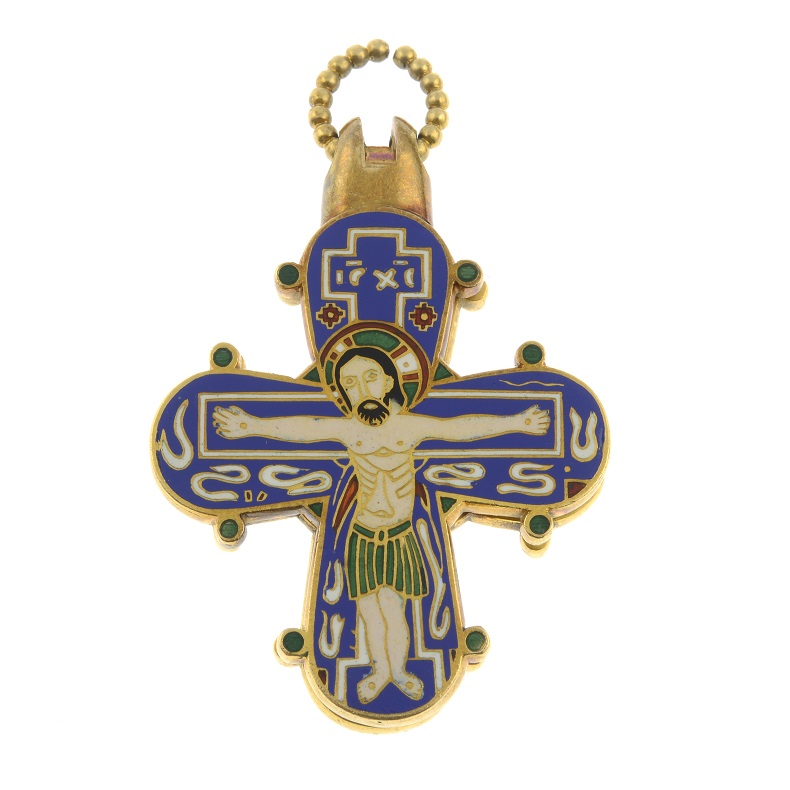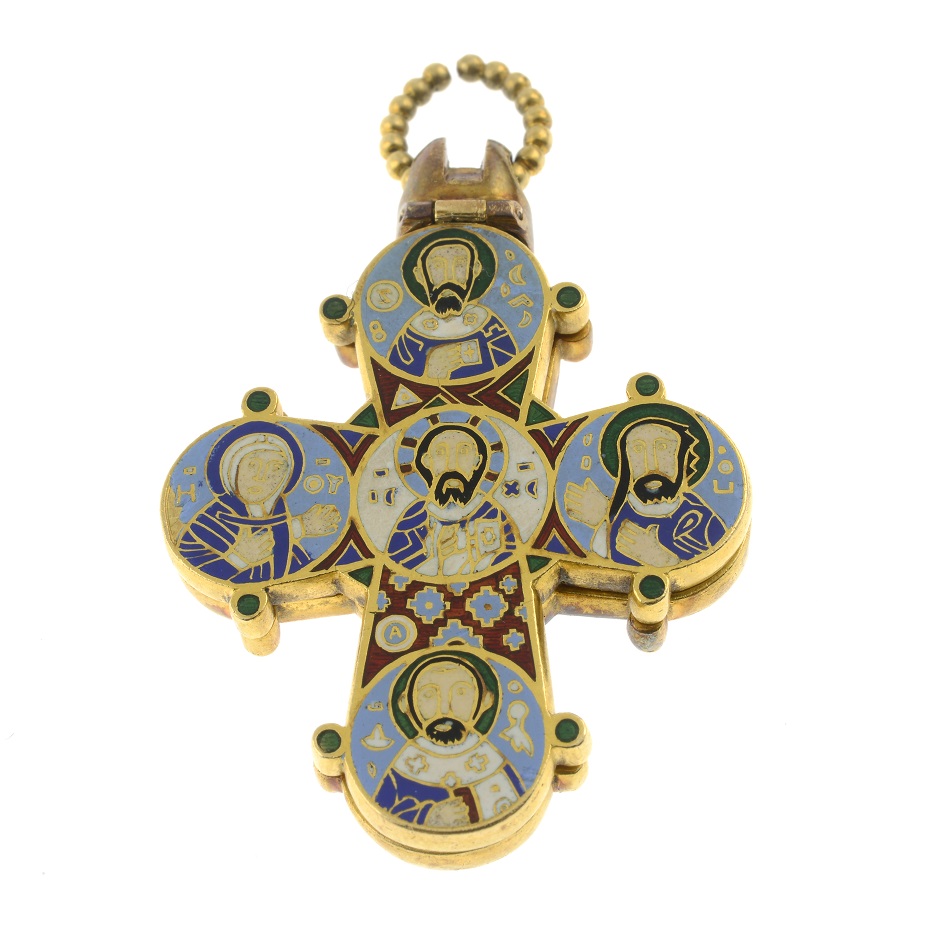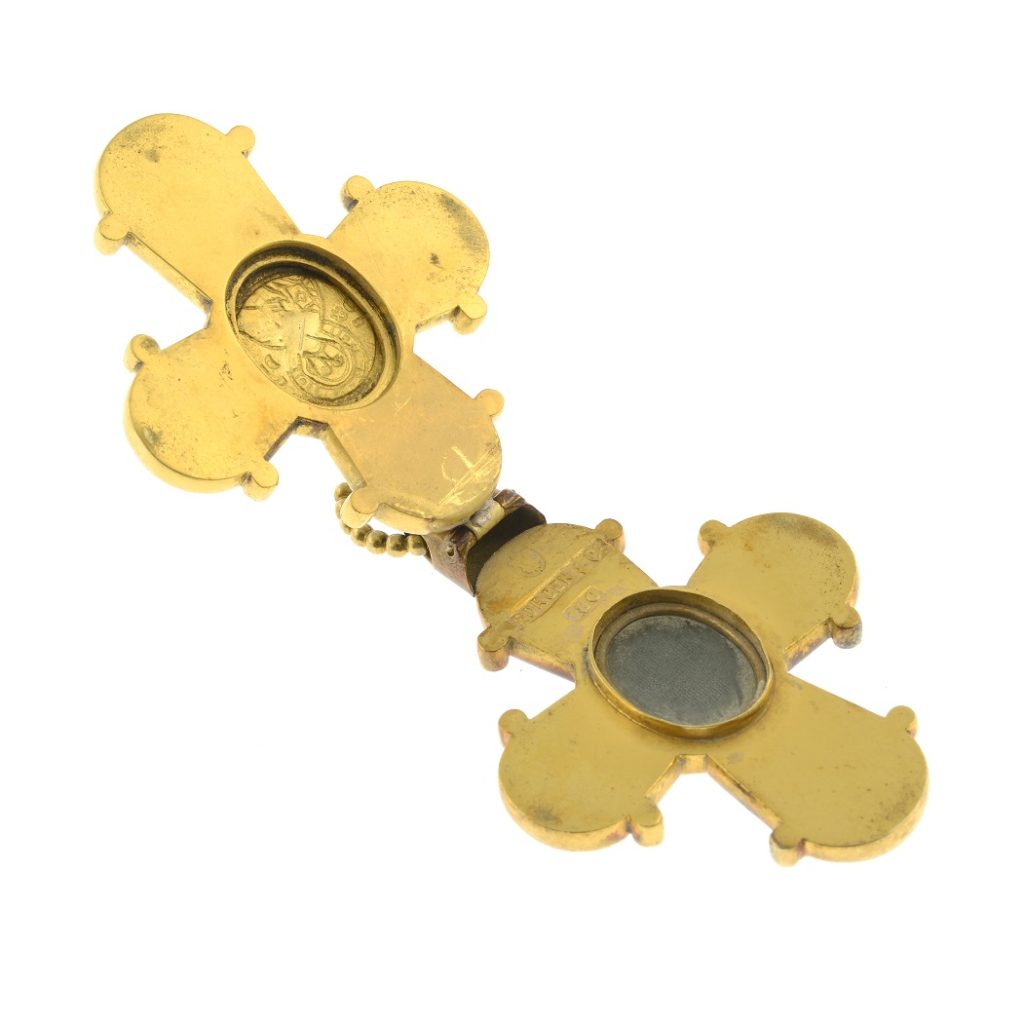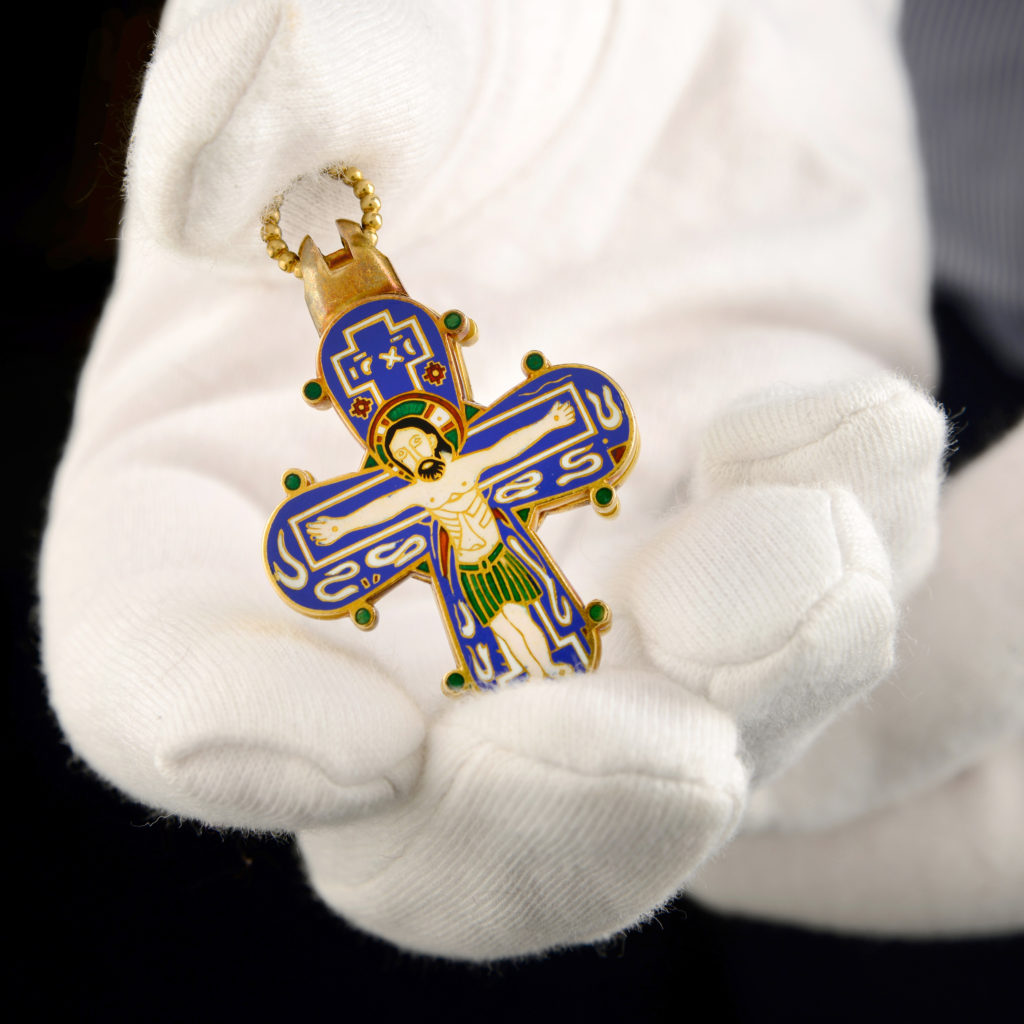Dagmar Cross' Origins
The Dagmar Cross pendant gained its name after its discovery in 1683. It was found in a tomb believed to belong to Queen Dagmar of Bohemia (c.1186-1212). The tomb was in the oldest brick church in Scandinavia - St Bendt’s Church, Ringsted, Denmark. Because multiple tombs were opened at the same time, there is a question about the original owner. The suggested alternative owner is Richiza, Valdemar ‘The Victorious’ II of Denmark's sister. She was therefore the sister-in-law of his wife, Queen Dagmar. Dagmar’s enduring popularity into the seventeenth century ensured that the cross’ connection to her remained strong. The Byzantine pendant was transferred to the Danish Royal Treasury in 1695.
International appeal
Though the Dagmar Cross has been prized in Denmark since its discovery, reverence for it became international 300 years later. The Danish Princess Alexandra married Albert Edward, the Prince of Wales in 1863. As part of her wedding trousseau, she bought jewellery inspired by prized Danish antiquities, including the Dagmar Cross. Alexandra's father, King Frederick VII of Denmark, gave her a gold and enamel replica. Danish court jeweller Jules Didrichsen made this piece. The cross was suspended from a necklace of 2000 diamonds and 118 Danish pearls. The British and Danish press both jumped on the new cross and her other wedding jewels. They became highly publicised and copies were sought after.
Danish retail jewellers Borgen & Co. seized the opportunity to capitalise on this wave of interest in Danish design. They opened a London branch to import goods and artwork from Denmark at 142 Bond Street. Borgen & Co. counted Princess Alexandra as a patron and quickly gained the use of the Prince of Wales’ feathers for their branding. Indeed, the pendant in the Fine Jewellery sale has the royal feathers emblem above a stamp reading ‘Borgen & Co.’.
Dagmar Cross, by Borgen & Co. at auction
Like most jewellery with a religious theme, the cross pendant is more than what meets the eye. Its form and its delicately enamelled motifs to both its front and reverse mirror the famed eleventh- to twelfth-century Dagmar Cross. The original now resides in the National Museum of Denmark.
In the Fine Jewellery auction on November 24th, we sold a replica Dagmar Cross pendant as lot 688 for £1,430.

The pendant is a mid to late nineteenth-century homage to its Byzantine predecessor. It follows the same motifs and use of cloisonné enamelled cell work. It depicts, on one side, the Crucifixion and, on the other side, there are five medallions. These medallions bear images of the Virgin Mary, Jesus, and the Saints Basil of Caesarea, John Chrysostom, and John the Apostle-Evangelist. These icons were all venerated by both Eastern and Western traditions of Christianity.

The pairing of blue, green, maroon and white enamels within gold cells is faithful to the design of the original cross. The enamels’ stable colours have ensured that this pendant is as impactful today as when it was first made. The beaded pendant loop is also faithful to the Dagmar Cross’ design.

The two differ with the addition of a hinge to the top of this nineteenth-century pendant. It opens to reveal a glazed compartment.
This cross pendant’s combination of Byzantine religious power, European royal power and the Victorian trend for royal replicas is an important example of how small jewels can pack great meaning.

Further reading
A similar cross pendant (but without enamel) is part of the British Museum’s collection. The museum included it in its 2010 exhibition Jewellery in the Age of Queen Victoria: A Mirror to the World. It, too, was retailed by Borgen & Co. and may have been made in the Copenhagen workshop of jeweller Vilhelm Christesen. Another Dagmar Cross replica was sold at auction in the UK in 2018, but featured only the side with the five icons, whilst the other side featured inscriptions commemorating the First World War. The Fine Jewellery sale’s complete replica, with its detailed enamel still in good condition, is therefore a rare find.
See also Charlotte Gere & Judy Rudoe, Jewellery in the Age of Queen Victoria: A Mirror to the World, London: British Museum, 2010.












